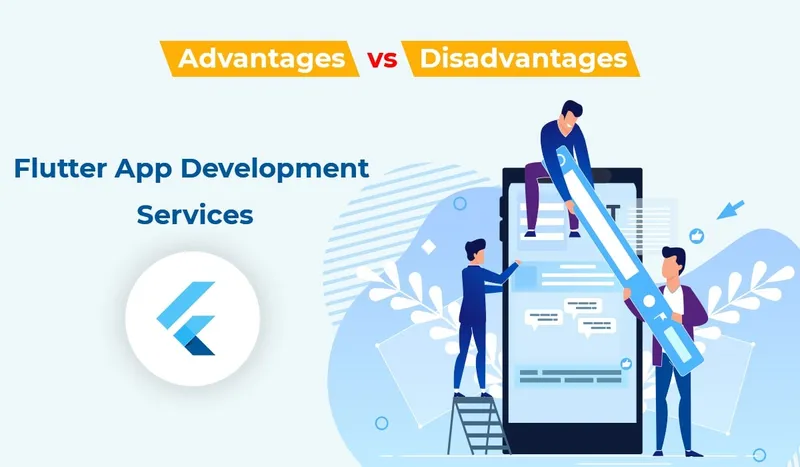

Flutter App Development Services – Advantages Vs Disadvantages
This content updates you about the advantages and disadvantages of Flutter mobile app development services.

Flutter is a technology that is drawing a lot of attention these days. This new open source technology presented by Google is used to create both native Android and iOS apps using the same codebase. It is a complete SDK or software development kit consisting of everything that is required to develop cross-platform applications. The kit contains ready-made widgets, testing and integration APIs, command-line tools, and rendering engine. However, there are some advantages and disadvantages of choosing Flutter App Development Services for creating mobile applications. These have been elaborated as follows.
The advantages
- Same code for Android and iOS development: Being cross platform, the same code can be used for both Android and iOS app development. As a result, it takes less time for the developers and generates more business opportunities for organizations. On both platforms, the app can be launched simultaneously. That means applications built on Flutter can function on Google platform and Apple impeccably.
- Hot reload feature: The Hot Reload feature allows designers and developers to see the changes they have made to the code immediately and it doesn’t require any plug-ins to work. If there is an error, it can be fixed at once without having to restart the entire process. Otherwise if one goes back to normal programming, deployment takes time. This feature enhances developer’s productivity and enables them to experiment without delays.
- Open source: Being an open-source tool, almost everything in the framework such as material, Cupertino widgets, animation, and gestures can be customized. In addition, Flutter and Dart offer extensive documentation and community support to solve any problems that may arise.
- Customized and ready-made widgets: Flutters are building blocks which help to create beautiful and unique user interface which can be customized on any level as per requirement. Widgets can be combined to form layouts. It brings extreme sophistication to the app. As widgets are organized in trees, it is handy for rendering though it may result in extreme complication of the structure.
- Easy to learn: As Flutter App Development Services use Dart coding language, less codes are required for programming. This tool is easy to learn and even developers with very limited programming knowledge prototyping and building apps can learn this technology. It has also been observed that no prior experience in Flutter App Development Services is required to begin with Flutter. It is growing very fast and enterprises like medium-sized agencies and startups have successfully implemented this technology.
- Portability: As Flutter is not a mere framework but a complete SDK, it has the capability to function on all devices having a screen. To build Flutter apps for Mac OS, Linux, and Windows, third party ports have been created which include embedding APIs, mouse, different plug-ins, and keyboard input functions.
- Internationalization and accessibility: Flutter supports 24 languages and currencies, dates, layout options, units of measure and more. It also ensures web accessibility and supports components like large screen readers, large fonts, and sufficient contrast.
The disadvantages
- Apps to be greater than 4MB: Mobile apps made with Flutter are bigger in size as they use in-built widgets and weighs about 4MB or more. When the size of the app is larger, the users tend to delete it as they do not wish to part with their music library or favorite photos. So the size of the app should be reduced due to limited storage space on mobile phones.
- Difficulty with iOS: As Flutter is developed by Google, creating Android apps on Flutter is quite enjoyable because Google fixes bugs within a very short period. However, developers are concerned about its implementation on iOS.
- Unavailability of third party libraries: For programmers, third party libraries play an important role in automating the process of software development as it lessens the task of programming everything from scratch. These libraries are easily available, pre-tested, and open source for older technologies. However, for Flutter the libraries are still not readily available.
- Dart: Although Dart is suitable for Flutter app development services, it is not as good as programming languages such as JavaScript, Java, C#, and Objective-C. Moreover, not many new developers know Dart and it is quite challenging to find one.
To sum up
Undoubtedly, Flutter is one of the most popular tools available at present for developing mobile applications. It is explicitly suitable for organizations that wish to create 2D apps faster and launch it on all available platforms simultaneously.






